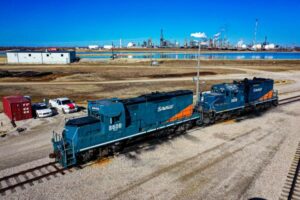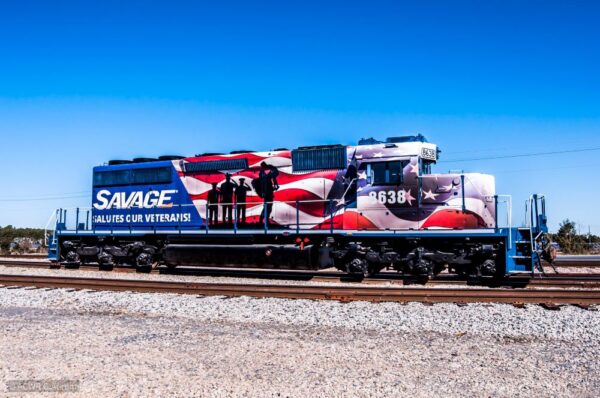
Championing Sustainable Practices is an Effort Worth Making
In the second quarter of the year, Savage publishes its annual sustainability report detailing how the company is promoting sustainable practices. As an operator in both industrial and agricultural arenas, searching for better, more environmental solutions is a core motivator within our daily business.
“We’re committed to driving positive change in the industries we serve,” says Kirk Aubry, Savage’s CEO. “By delivering innovative solutions, we’ll continue to build a resilient business that provides ongoing opportunities for people ‘to do things they never dreamed possible,’ while protecting the planet and leaving a legacy for future generations.”
The Big Picture
Finding lasting success with sustainable practices is possible when companies and their partners work together. Savage strives for this in each of its sectors utilizing a variety of different methods, including:
- Working with producers earlier in the supply chain to lead with more environmental solutions
- Providing the necessary resources to producers from industry experts
- Using sustainable agriculture to invest in a cleaner future for all our work
Environmental responsibility is an ongoing care for which Savage is happy to find solutions. Perhaps the greatest tool to meet those ever-evolving needs is the relationships we have with our Partners and Customers.
Start at the Beginning with Environmental Solutions
In order to take a more holistic approach to sustainable practices, Savage has seen success by involving our Partners as early as possible. For Bartlett, the agribusiness side of Savage’s family of companies, this means getting in touch with our producers before planting season even begins. “When we look at a sustainability project,” says Vaughn Duitsman, Bartlett’s director of sustainability, “you can’t make it happen without the farmer.”
These discussions between Bartlett and our producers look to address two main points:
- Which regenerative practices can be implemented during the upcoming season to create more sustainable agriculture; and
- How these practices can be accomplished in as cost-effective way as possible.
The hope is that by updating our processes early, the products sent down the supply chain will be of a higher quality. The environment, too, will benefit.
This is an example of the advantage Bartlett brings to our Customers. “We are directly talking with producers and end consumers,” Duitsman said. “That customer service allows us to provide supply chain transparency and gives us a competitive advantage with these sustainability projects.”
On the infrastructure side, Savage’s philosophy to design like an operator allows us to marry efficiency and environmental solutions at the conception stage of a terminal. This can also help in our mission to promote sustainable agriculture, as is the case with Savage Railport — Southern Idaho, highlighted in our sustainability report.
This Pocatello operation is Idaho’s first intermodal terminal and is a boon to sustainable practices. In fact, the facility:
- Significantly reduces the need for trucks between Pocatello and Salt Lake City; and
- Provides infrastructure for Idaho farmers to offload their products.
The railport helps reduce carbon emissions by eliminating the need for extra driving. It also helps preserve the integrity of the harvest by limiting the times it changes transportation. These solutions, and more, were considered at the outset as a way to serve Customers while honoring Savage’s responsibility to the environment.
Hiring Well Helps Support Sustainable Practices
Having the right personnel on your team is essential at every stage of the supply chain. From policy makers to boots-on-the-ground Team Members, sustainable practices are a group effort. Again, the Savage Railport in Southern Idaho is a shining example of this.
- At its earliest conceptual stage, industrial engineers worked with those who would be serving the terminal to find ways to promote sustainability.
- Procurement teams secured hybrid or ultra-low-emitting equipment to use there.
- Daily operations are then carried out by individuals trained in and dedicated to environmental solutions.
Savage replicates this model across its extensive transload network, fulfilling a portion of its core purpose to Sustain the Planet.
As sustainability strategies roll on, it is critical to hire people who compliment those efforts. This has made a significant difference for Bartlett as we strive to achieve sustainable agriculture. “A couple of years ago, we changed the way our sustainability team in the Ag sector is made up,” explains Duitsman. “The supply chain participants were wanting to lower scope 3 emissions. We now have agronomists who can go to the producers and knowledgeably talk to them about sustainable practices.”
Working as a team with producers and end users, with science in our collective corner, has the potential to eliminate a lot of their pain points, including those that touch on:
- Soil health
- Water conservation
- Nutrient management
Attending to these essential issues is not easy, but the right Team Members are ready to tackle them as they come up. “The producer is talking to someone at Bartlett throughout this whole process,” says Duitsman.
Sustainable Agriculture Helps Everyone
While Savage and Bartlett are separate entities, the two companies are united in purpose and perfectly aligned to work together. Savage brings the engineering, construction, and transportation know-how to help optimize the Ag sector’s supply chain. Meanwhile, Bartlett’s sustainable practices have the potential to significantly improve costs and emissions on the infrastructure side.
Case in point: Bartlett’s newly constructed soybean crushing plant in Cherryvale, Kansas.
As one of the world’s biggest soybean processing facilities, the Cherryvale plant will play a significant role in environmental solutions such as:
- Renewable fuel/sustainable aviation fuel
- Sustainable animal feed
- Increased supply of SBO for the food industry
Soybean oil has the some of the best chances to fulfill the sustainability projections of the EPA and EIA. Biodiesel fuel will play a role in ongoing infrastructure projects. The improved carbon intensity score of each bushel will also have a marked effect on the quality of the harvest.
Such an effect can impact agricultural prices across the board, which could lead to a type of “sustainability arms race” from farm to farm. In that scenario, the end consumer ultimately comes out on top.
The 2022 sustainability report noted about the renewable fuels value chain that, “Savage strengthens the entire supply for the production and distribution of renewable diesel, biodiesel, and sustainable aviation fuel… [meeting] the federal Renewable Fuel Standard.”
By starting the conversation around sustainable practices early, by hiring the right people, and by investing in renewable fuel, Savage and Bartlett help to set the standard in achieving sustainable environmental solutions. If we truly wish to Sustain the Planet, this is an effort worth making.



